articles
How Hinduphobia Rears Familiar Head In American Academia
Published
10 years agoon
By
ihar
The gatekeepers of American academia have struck again. This time, the gate has been slammed on the face of Dharma Civilization Foundation (DCF), a California non-profit that aimed to promote the multidisciplinary study of Dharma at accredited institutes of higher education. “We were motivated by the desire to advance an integral and transformative approach to understanding the Indic culture, religions and civilization that will support a narrative of India’s past which is consistent with the actual lived experience of dharma,” says Dr Shiva Bajpai, President of DCF.
DCF’s vision found enthusiastic support from donors such as the Thakkar family which contributed US$ 1 million to set up a chair in Vedic and Indic Civilization Studies at the University of California, Irvine (UCI). Other donors came forward to establish chairs in Sikh studies, Jain studies and Modern India studies and soon the UCI was all set for four chairs with grants amounting to a total of US$ 6 million.
At a gathering in the UCI campus attended by 100 people in May 2015, the Dean of UCI’s School of Humanities Dr Georges Van Den Abbeele thanked the donors and held out a hope for creating a Center of Excellence for Indic Civilizational Studies at UCI.
Meanwhile, the old guard steeped in what is now recognized by many as leftist-secular or Hinduphobic ideologies, saw a grave danger to the established order and fell into a massive seizure. Led by professors from the UCI’s Centre for Asian studies, who were perhaps miffed at the idea that an independent chair on Indic studies could soon challenge their ideologies, a campaign was orchestrated to halt DCF’s initiative.
A petition was launched to declare that both DCF and donors were a part of “right-wing Hindu group of organizations that has been known to undermine Indian pluralism” and that they would lead to “a privileging of upper-caste ‘Vedic’ Hindu identity. An alarm was raised that only “certain kinds of religious practitioners” who would “not represent the intellectual richness and rigour” of the university would be selected to teach courses, which would lower the “standards of academic excellence”. The petition was signed by over 400 academicians including prominent personalities such as Wendy Doniger, Michael Witzel and Sheldon Pollock who have built their reputation with papers portraying Hindus as oppressive, casteist, misogynist, sex-starved and violent.
Let us examine just one of the signatories of the petition: Shefali Chandra, Associate Professor of South Asian History, Washington University in St. Louis. She has published a paper titled “The World’s Largest Dynasty: Caste, Sexuality and the Manufacture of Indian “Democracy”” which makes the case that “the myth of India is a necessary camouflage for an upper caste autocracy characterized by militarism, genocide and occupation.” The entire list of signatories reads like the Who’s Who of Hinduphobes.
The petition against the establishment of the DCF-Thakkar Family Chair at UCI was followed by demands for a review of the agreement between the concerned parties. Allegations were made against the Dean and other administrators for not having a meaningful consultation with other faculty.
Kalyan Viswanathan, Executive Vice-President of DCF sought to allay apprehensions by explaining that the aim of establishing the chairs was to widen and diversify the study of Indic traditions and culture; from being predominantly focused on applying Western models to being more culturally sensitive. In anarticle on the DCF website he said it was important to take seriously the self-understanding of non-western Indic cultures and religions as “lived traditions” of fellow Americans, and include dimensions such as philosophy and ethics from an insider’s (emic) perspective which barely exist today. He pointed out that ‘Women’s studies’ have benefited from having women scholars, ‘African American studies’ have benefited from having African Americans scholars, and Christian, Buddhist, Jewish, or Islamic Studies, have all benefited from respectively having scholar-practitioners as active participants in these fields. “Such scholars are not questioned about their objectivity, but are, in fact, respected for their unique experiences and perspectives, as well as the depth, nuance, and academic rigor they are able to bring to academia,” said Mr Viswanathan. “DCF holds that such scholar-practitioners of Hinduism would bring the same to Hindu Studies,” he added.
However, in a development that can only be called a matter of shame for the University of California, Irvine, the authorities decided to discard the US$3 million gift they received for the DCF-Thakkar chair and to review the remaining US$3 million gifts for other chairs. By buckling under pressure from a vicious campaign organised by a few South Asian faculty members, the Humanities Executive Committee and the Dean of the School of Humanities displayed a complete lack of spine.
The review committee that forced UCI to discard the donors came up with a comment that the terms of DCF were exclusionary, preventing some from applying for positions, which was against the public-hiring rules that UCI is governed by. The ridiculousness of the comment can be understood by asking if there us any discrimination involved when a job position specifies a PhD degree. If not, then why should an emic-seeking group be pilloried with “discriminatory” labels, when it seeks emic-candidates? An etic (outsiders) perspective invariably views Hinduism through privileged lens of Western experiences, whereas an emic perspective will offer a different viewpoint that honours the sacred.
The review committee also made unsubstantiated charges against Dharma Civilization Foundation raising “Fear, Uncertainty & Doubt” (FUDs), which are commonly used in disinformation campaigns.
Said Mr Viswanathan: “The overwhelming message that these faculty members have delivered through their public petitioning, and highly prejudicial open letters, is that the Hindus are not welcome to participate at the academic table. We have to wonder, what indeed is the academic freedom that these faculty members are defending? Is it the freedom to accuse, abuse and slander freely and without any check? Why single out the Hindu American community when Religious Studies Chairs and centres are currently funded, as a norm, by various religious communities with diverse viewpoints? Why so much irrational hostility towards the Hindu community?”
The UCI petition brings back memories of the California textbook controversy of 2005. At that time, the Hindus of California had called out the innumerable inaccuracies in the depiction of Hindus in school textbooks and requested for editing them out. To take one example, they had asked for assertions such as “Men had many more rights than women,” in ancient India to be corrected to “Men had different duties (dharma) as well as rights than women. Many women were among the sages to whom the Vedas were revealed.”
California’s Curriculum Commission had endorsed most of the edits suggested by Hindu groups. This caught the attention of Professor Michael Witzel of Harvard University, who organised a campaign along with fellow Indologists (some of whom have also signed the latest UCI petition) to oppose the edits on the grounds that they were unscholarly and politically and religiously motivated. Ultimately, more than 80% of the corrections proposed by Hindu groups were not approved.
From 2005 until now, clones of Professor Michael Witzel have multiplied manifold within an academic ecosystem that only supports peers who look at Hinduism through the lens of Marxism, Freudian psychoanalysis and atrocity perpetuation. Ironically, a large section of these peers are of Indian origin.
Thus, even today, a high schooler studying ‘World Civilizations: Global Experience’ (AP Edition) textbook will come across sentences such as: “The Indian caste system is perhaps the most extreme expression of a type of social organization that violates the most revered principles on which modern Western societies are based.”
Intellectual honesty would demand that instead of taking the moral high ground, these books would dwell equally on the issues of inequalities, racism and human rights violations of various kinds that continue to plague societies all over the world, including modern, western societies.
Meanwhile, there is a growing build-up of opinion led by thinkers such as Rajiv Malhotra that it is pointless to set up chairs on Indic civilization or Hinduism studies within western academia. Given that it costs as much as US$ 4 million for setting up one academic chair in USA he believes it would be far better to use the money to set up a whole department of scholars in India with the concentrated goal to develop a new discourse. “As an example, a centre to develop a Hindu perspective on women’s status and role could be tasked to produce game changing discourse on that theme,” he argues in an article in Swarajya.
In his recent best-selling book “The Battle for Sanskrit”, Mr. Malhotra has argued for rebuilding the traditional institutions of learning in India, which have been stripped of their spirituality by western Indologists and their cohorts. He has even named the sophisticated perpetrators of “American Orientalism” who have captured the discourse on Indian history and culture with scant regard for sacred traditions, while pretending to be well-wishers of all things Hindu or Indian.
Mr Vishwanathan perceives the situation differently. While he agrees with Mr Malhotra that there is a need for a new corpus of content and discourse, he does not think it has to only come from India. For the generations of Indian-origin children who will pursue an education in America, there is an urgent need for schools and colleges that offer Indic civilization studies from the insiders’ or emic perspective. “We live in a global world and academicians from India will have to collaborate with the world in inaugurating this new corpus of content and discourse,” he asserts.
According to him, India is disadvantaged by two historical realities:
1) that a flourishing discipline within the academia, which is equivalent to the study of divinity within a Hindu context, was never allowed to develop; and
2) that the brightest students in India still favor the disciplines of science, math, engineering and medicine.
“The argument that investments can be better safeguarded in India, while not so much in the West, belies the reality that India is also infiltrated heavily by the same mentalities that make scholars hostile towards Hindu Dharma,” says Mr Viswanathan. “The question is not whether we invest a mere US$4 million here in the West or in India – which represents a scarcity mentality. We need to be looking at how to generate US$400 million, where US$200 million can be invested in India, and US$200 million around the world.”
Every community has had to struggle against prejudice and bias that gets entrenched in institutions, and masquerades for a time as the truth – the Jewish community has had to fight for respect and legitimacy. Women have had to fight it. In the early days even Catholics had to fight for this in America.
Intellectual freedom of the academia is essential for the progress of society. That freedom was intrinsic to ancient India. What we are witnessing today is a domination of academia by etic voices, especially with regard to Hinduism. It is high time the voices of traditional scholars with an emic perspective were included. Pluralism is integral to freedom.
The latest clampdown by a blatantly Hinduphobic American academia has made it imperative for all those who stand for justice to join hands and collaborate. There is a need to speak in one voice against the biased dominant academic consensus.
Sahana Singh is a writer /editor who specializes in environmental issues, current affairs and Indian history. She is a member of Indian History Awareness and Research, a think tank based in Houston.
You may like
articles
CONSTRUCTING GENDER IDENTITIES IN DEATH : RETHINKING MORTUARY ARCHAEOLOGY THROUGH THE EVIDENCE OF SINAULI
Published
1 day agoon
October 30, 2025By
Suprabho Roy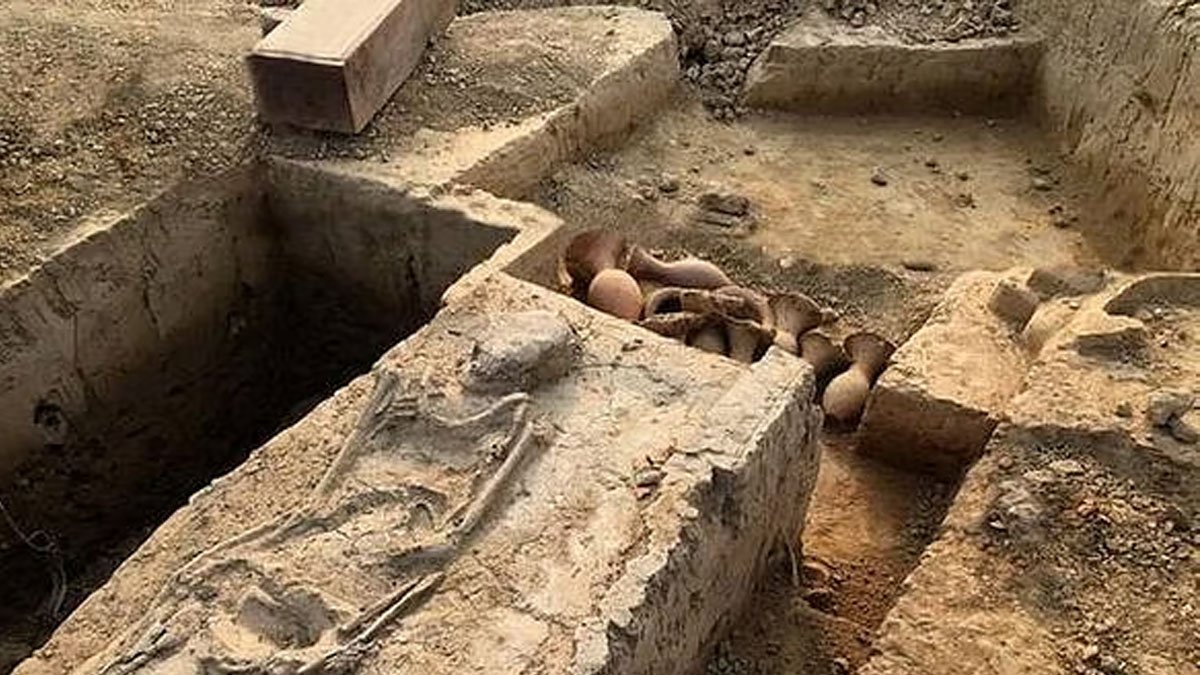
The archaeological site at Sinauli in Uttar Pradesh has provided significant insight into ancient burial practices, gender identities, and social hierarchy in South Asia. The evidence uncovered at Sinauli challenges long-held assumptions and offers fresh perspectives on mortality, gender roles, and elite status in ancient Indian society.
Location and Historical Context
Sinauli is situated in the Baghpat district of western Uttar Pradesh, lying within the fertile Upper Ganga-Yamuna Doab region. It is associated with the Ochre Coloured Pottery (OCP) culture, which dates back to the early second millennium BCE. This site gained attention due to its unique burial practices, especially those involving women and the material assemblages found with their graves.
Overview of Excavations
The Sinauli excavations were initiated in 2005 under archaeologist D.V. Sharma, and further work was conducted in 2018 by Dr. Sanjay Manjul. In 2005, archaeologists uncovered 116 burials, typically oriented north-south, along with ochre-colored pottery. The 2018 excavations revealed even greater complexity, including wooden coffins adorned with copper sheets, rectangular boxes, antenna swords, helmets, shields, pots, and controversial wheeled vehicles—leading to a debate over whether these were chariots or carts.
Types of Burials
Sinauli yielded four primary burial types:
– Symbolic burials without skeletons.
– Primary burials with full skeletons.
– Secondary or fragmented burials.
– Multiple burials containing fragmented remains.
Gender Distinctions in Burial Practices
A significant contribution of Sinauli is its challenge to conventional views on gender and mortuary archaeology. Certain burials, notably those identified by Asko Parpola, show that elite women were sometimes interred in richly decorated coffins with martial symbols such as swords, shields, and wheeled vehicles. Coffins for women featured steatite inlay and were often covered, in contrast to men’s coffins, which generally had copper sheathing and were left uncovered. Such differentiation suggests elaborate symbolism surrounding gender and possibly ritual seclusion or heightened sacredness for women in death.
One highly debated aspect is the absence of feet in Burial-1, which might suggest less earthly mobility or represent a transformation from earthly to transcendent status.
Rethinking Weaponry and Gender
The presence of weapons, such as copper antenna swords and shields, in women’s graves at Sinauli has prompted scholars to reconsider rigid notions of gender roles. These martial objects could signal the dead’s authority—either as warriors or ritual leaders—thus broadening our understanding of gender within ancient funerary contexts. Interestingly, such elaborate martial symbolism is less prevalent in the male burials at Sinauli.
Symbolism of Coffins and Elite Status
Coffins at Sinauli, rare in South Asian archaeology, were more than mere containers; they symbolically transformed the deceased into sacred beings. Their intricate decoration reflects considerable labor, resources, and craftsmanship, indicating elite status and the possibility of gendered authority within the social hierarchy.
Conclusions and Implications
The burial evidence from Sinauli emphasizes material distinctions that reveal social stratification, hierarchy, and constructed gender roles. While the idea of women warriors remains debated, the presence of martial symbols with elite women points towards complex rituals and conceptions of social power in death. Sinauli thus stands out as a crucial site for rethinking gender identities, social class, and the symbolic aspects of funerary practices in ancient India.
articles
Rediscovering Sutanuti: IHAR WB CHAPTER’S Second Heritage Walk
Published
2 days agoon
October 29, 2025By
Suprabho Roy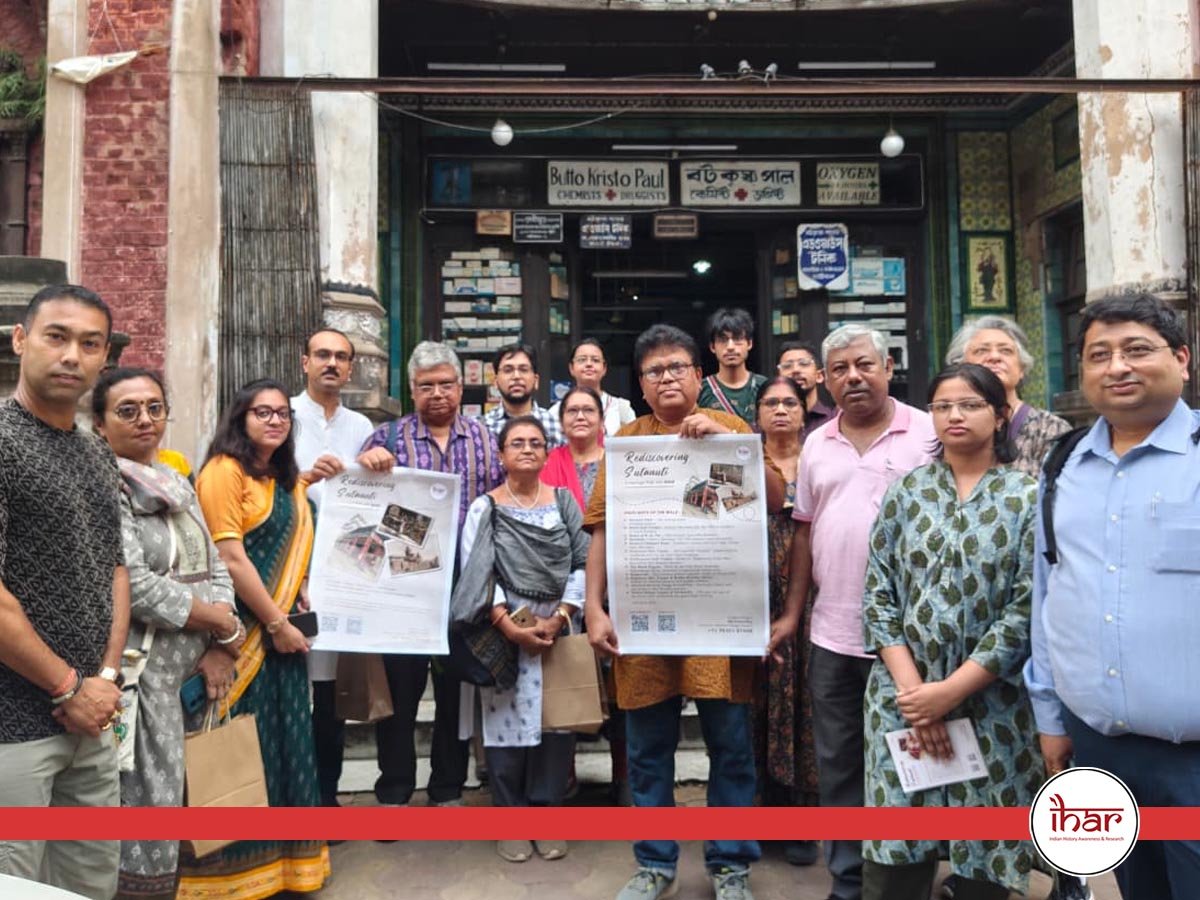
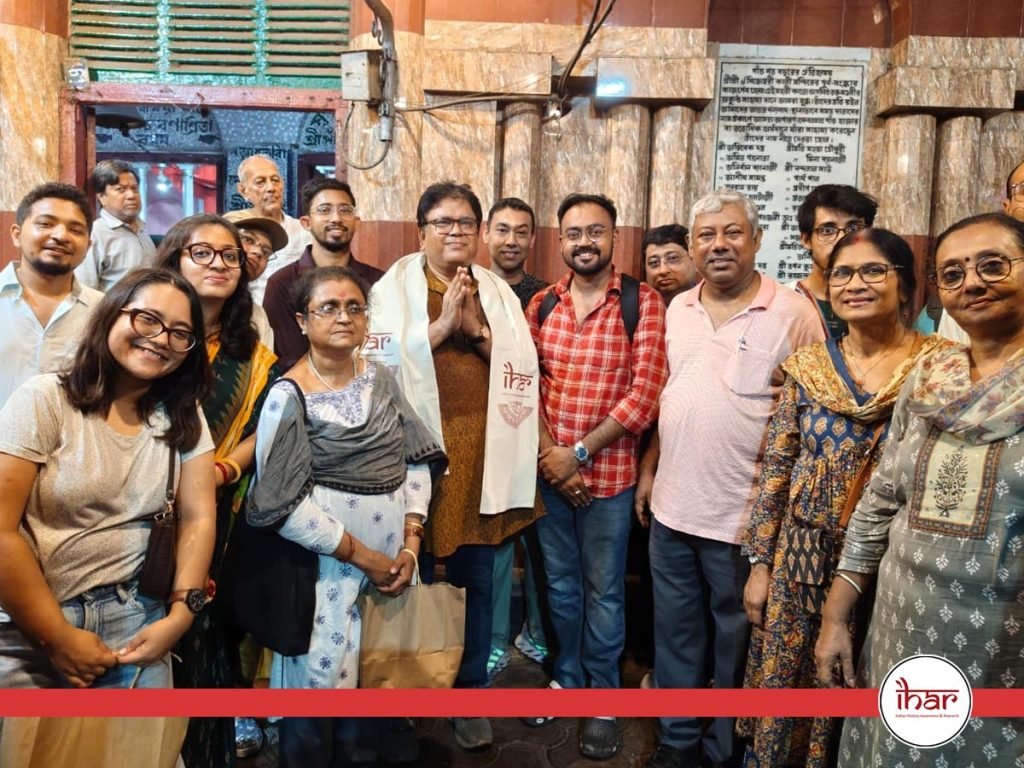
On Sunday, October 26, 2025, the organization Indian History Awareness and Research (IHAR) embarked on its inaugural heritage walk, titled “Rediscovering Sutanuti.”
Dedicated to the study, research, preservation, and public awareness of Indian history, IHAR has long aimed to connect people with the layers of India’s historical and cultural legacy. This heritage walk marked a significant step in that direction.
Why Sutanuti?
The choice of Sutanuti as the focus of IHAR’s first heritage walk was profoundly symbolic.
It was here, on August 24, 1690, that Job Charnock, an officer of the East India Company, is believed to have landed—a moment that would reshape the destiny of Bengal and, indeed, the entire Indian subcontinent.
Although the Company had visited Sutanuti earlier, it was this arrival that initiated a chain of events culminating in nearly two centuries of colonial rule, lasting until August 14, 1947.
On November 10, 1698, the East India Company entered into an agreement with the Sabarna Roy Chowdhury family, acquiring the zamindari (lease rights) of three villages—Kalikata, Govindpur, and Sutanuti—for an annual rent of ₹1300.
This agreement laid the foundation for the rise of Calcutta, though Charnock himself never witnessed it, having passed away in 1693.
Over 335 years later, the Sutanuti of 1690 and that of 2025 appear worlds apart.
Historians still debate the precise locations of Sutanuti Ghat, where Charnock’s ship is believed to have anchored, and Sutanuti Haat, the bustling market once held twice a week for the sale of cotton yarns and threads.
It was this very market that enriched the Seths and Basaks, the early inhabitants of Calcutta, through the textile trade.
Though no physical trace of that port or market survives today, scholars generally agree that Sobhabazar corresponds to the original Sutanuti region.
Accordingly, IHAR chose this locality for its first heritage walk—a symbolic return to the city’s historical roots.
The legacy of Sutanuti lives on in names like Haatkhola (“the open market”), a term derived from the old marketplace and still preserved in local designations such as Haatkhola Post Office.
Similarly, through the efforts of Sutanuti Parishad, the Sobhabazar Metro Station was officially renamed “Sobhabazar Sutanuti.”
Even in the absence of the old market, these surviving names echo the deep emotional and cultural resonance Sutanuti continues to hold for the people of Calcutta and Bengal.
⸻
Highlights of the Walk
The heritage walk took participants on a journey through Sutanuti’s remaining landmarks and forgotten corners, each revealing a fragment of Calcutta’s layered past.
B. K. Pal’s House
The first stop was the residence of B. K. Pal, the pioneering Bengali manufacturer and seller of medicines in the 19th century.
His most celebrated creation, Edward Tonic (1887), became a household remedy for fevers and stomach ailments—common and often fatal in colonial Calcutta—earning him a lasting place in Bengal’s medical history.
Shwet Kali Temple
Participants then visited the Shwet Kali Temple on Sobhabazar Street, nearly 300 years old and among the three oldest white Kali temples in Bengal.
Originally a shrine for dacoits, it later became a site of domestic worship. The deity here is distinctive—white in color, two-armed, tongue inside the mouth, and standing over Virupaksha and Kalbhairav, without the usual garland of severed heads.
Raja Janakinath Ray’s Mansion
The walk next stopped at the grand mansion of Raja Janakinath Ray of the Bhagyakul Ray family, prosperous traders from Dhaka and Calcutta.
Built in the 19th century, a part of this palatial building now serves as the Jorabagan Traffic Guard office, while descendants of the Ray family still occupy another section.
Chitpur Road (Rabindra Sarani)
Participants then walked along Chitpur Road, now Rabindra Sarani, regarded as Calcutta’s oldest road, dating back nearly 500 years.
Originally extending from Chitpur to Kalighat and later to Halisahar, the path once cut through dense forests inhabited by wild animals and robbers—an incredible contrast to today’s bustling thoroughfare.
Rameshwar Shiva Temple
Next came the Rameshwar Shiva Temple, built around 1700 by Nandaram Sen, the first native tax collector under the British official Mr. Sheldon.
Standing 80 feet tall, the temple mirrors the Aatchala style of the Kalighat Kali Temple and houses a six-foot-high Shivalinga.
Kumartuli and the Artisans
The walk then entered Kumartuli, where artisans were crafting Jagaddhatri idols.
Participants met Amit Ranjan Karmakar, a rare collector and restorer of vintage radios, tape recorders, and gramophones—all maintained in working order.
Radhagobinda and Baneshwar Shiva Temples
The Radhagobinda Temple and the Aatchala Baneshwar Shiva Temple, built by Bonomali Sarkar, another British-era official, were the next stops.
While the Radhagobinda Temple remains in fair condition, the Baneshwar Shiva Temple lies in neglect, its once-fine terracotta work fading amid weeds.
Kaviraj Gangaprasad Sen’s House
The group then visited the home of Kaviraj Gangaprasad Sen, the eminent 19th-century Ayurvedic physician who migrated from Bikrampur (Dhaka) in 1840.
Revered for his skill, he once treated Sri Ramakrishna Paramahansa and famously predicted that the saint’s illness was incurable—a prophecy now part of Bengal’s spiritual lore.
Dhakeshwari Temple
The Dhakeshwari Temple in Kumartuli houses a 800–1000-year-old ashtadhatu idol, originally enshrined in Dhaka by King Ballal Sen.
After Partition, the idol was smuggled to Calcutta in 1948 and relocated to its present temple in 1950, where it continues to be worshipped.
Madanmohan Temple
The majestic Madanmohan Temple, established in 1761 by Gokul Chandra Mitra, came next.
Once spread across 56 bighas, the temple houses a black stone deity associated with a legend involving King Chaitanya Singh of Mallabhum.
Its Raas and Annakut festivals are still celebrated annually.
Siddheshwari Mata Temple and the Black Pagoda
The final stop was the Siddheshwari Mata Temple in Baghbazar, believed to be over 500 years old.
Founded by a monk named Kalibor, it later came under the worship of the Chakraborty family and their descendants.
The goddess, affectionately known as “The Ginni Maa of Baghbazar,” was revered even by Girish Ghosh and Sri Ramakrishna, the latter once offering tender coconuts for the recovery of Keshab Chandra Sen.
Across the street stands the Black Pagoda, constructed between 1725 and 1730 by Govinda Ram Mitra, the second native revenue collector after Nandaram Sen.
Standing originally over 165 feet tall, it once surpassed even the Ochterlony Monument (Sahid Minar) in height before being partially destroyed in the cyclone of 1737.
Its surviving fragments still whisper tales of Sutanuti’s lost grandeur.
⸻
A Journey Through Memory
Thus concluded IHAR’s first heritage walk—a journey through the forgotten heart of Sutanuti, where every lane, temple, and crumbling mansion still bears the faint echo of Calcutta’s beginnings.
Though time has erased much of the physical landscape, the spirit of Sutanuti endures—in its names, in its memories, and in the hearts of those determined to rediscover it.
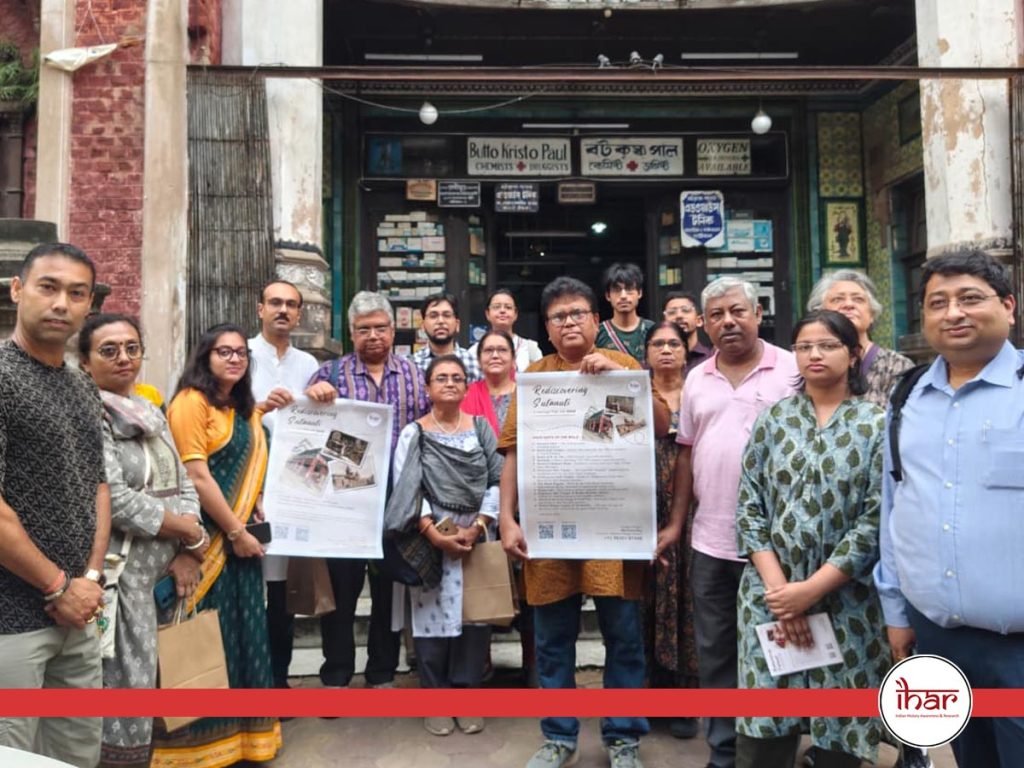
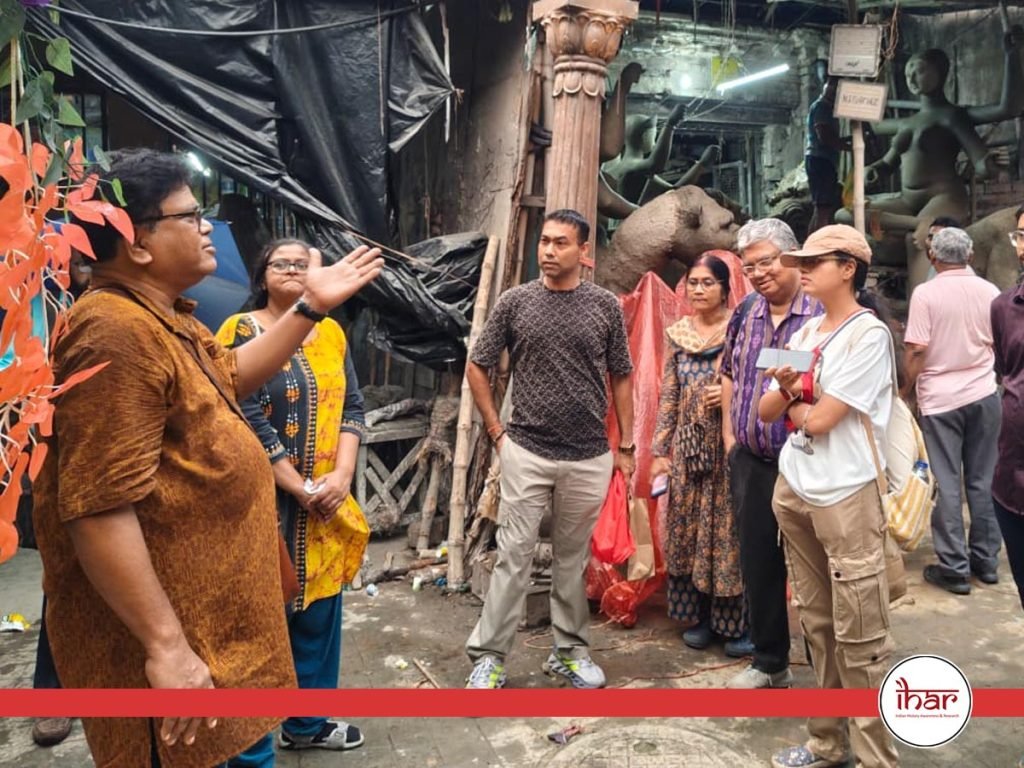
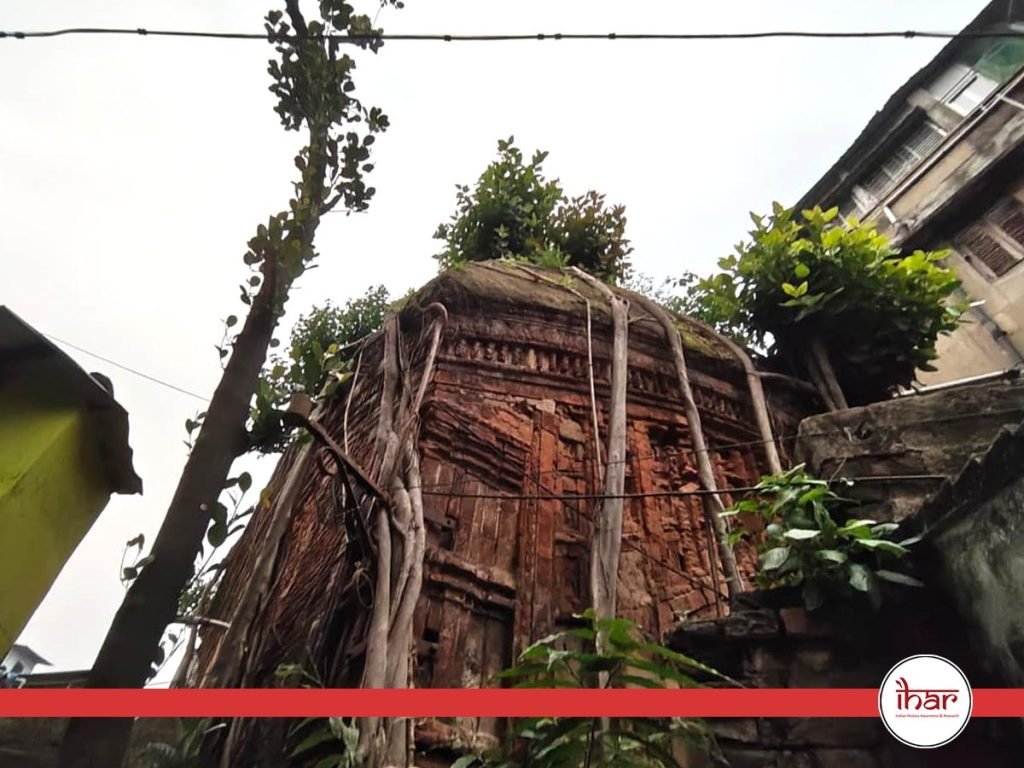
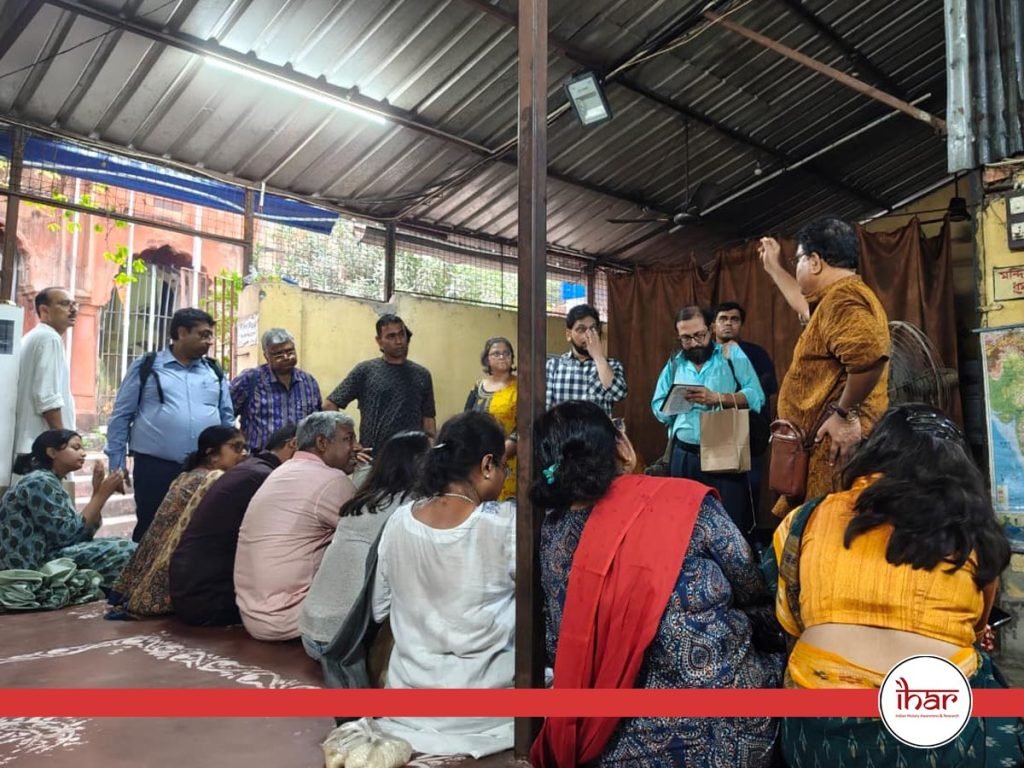
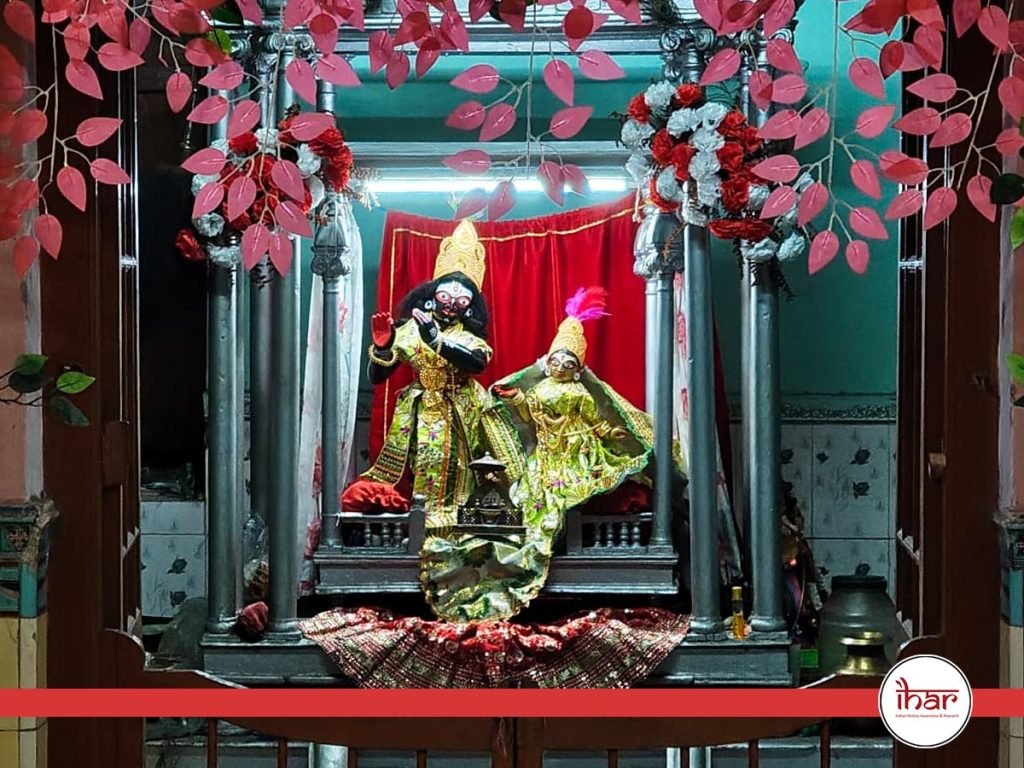
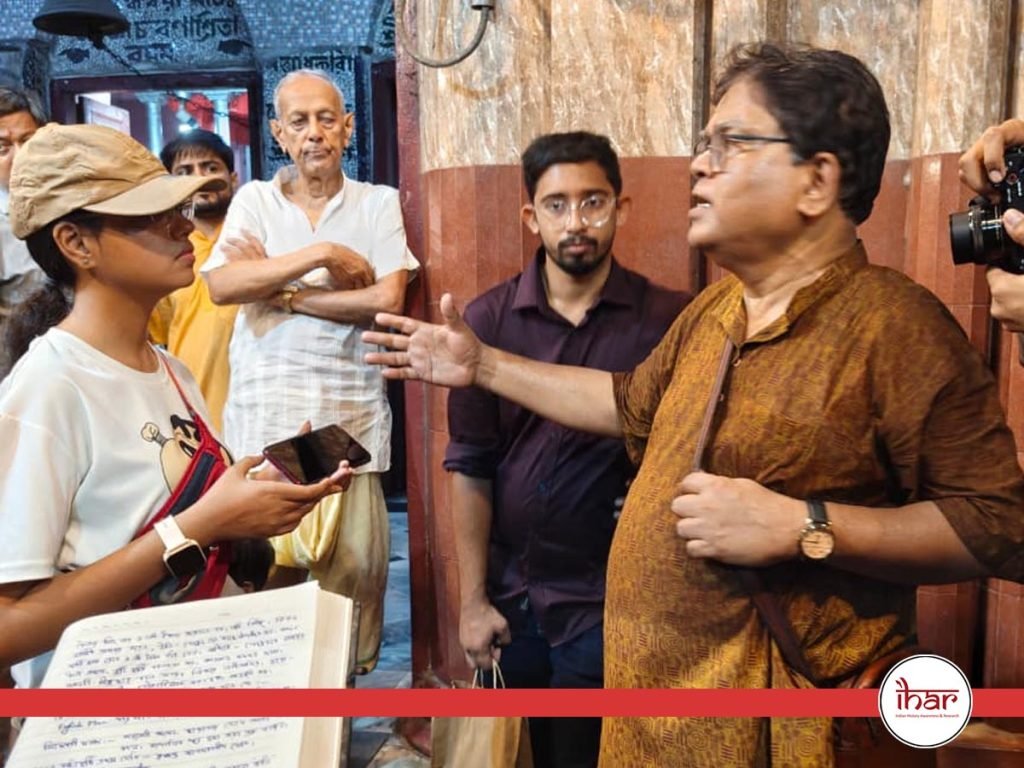
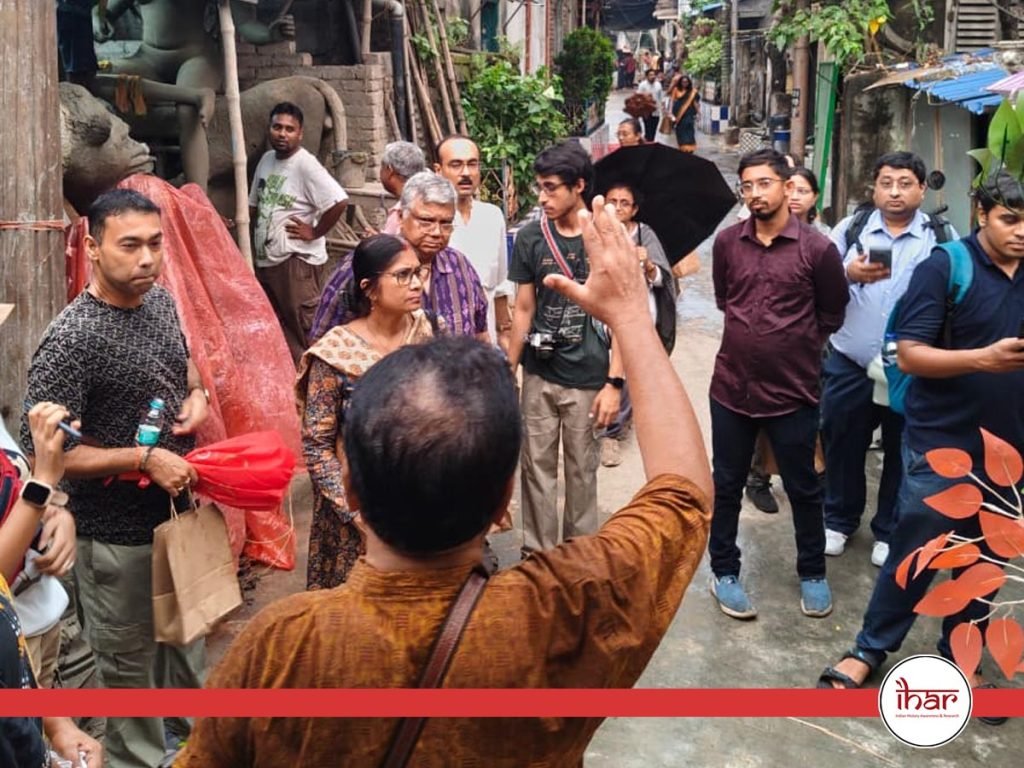
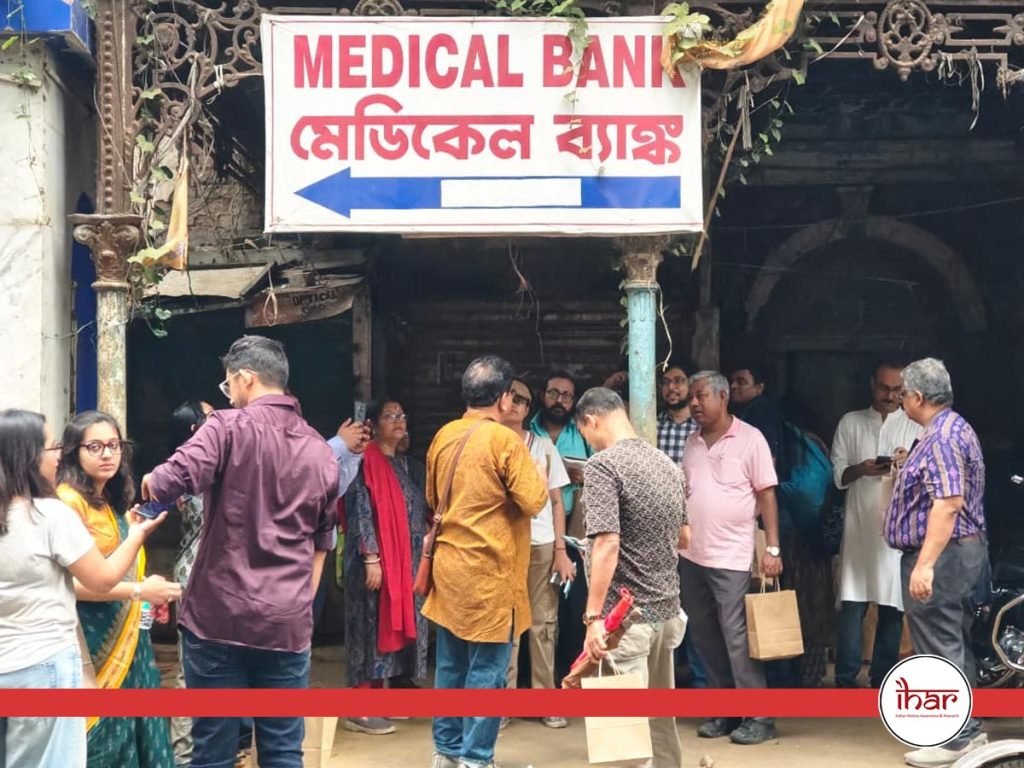
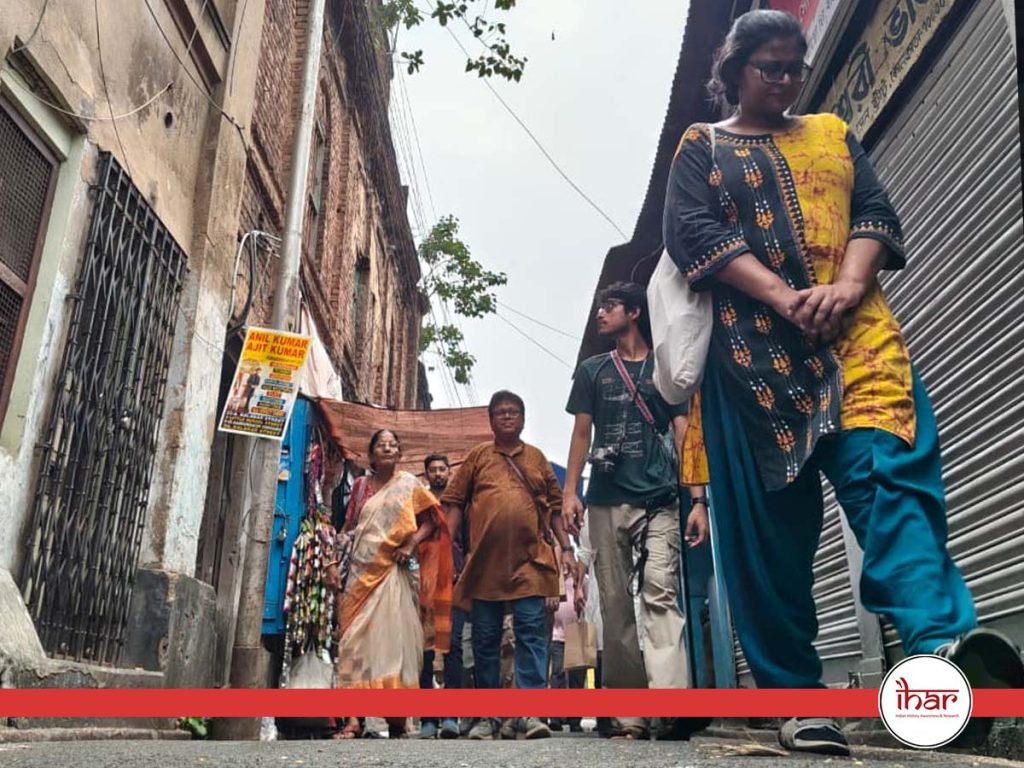
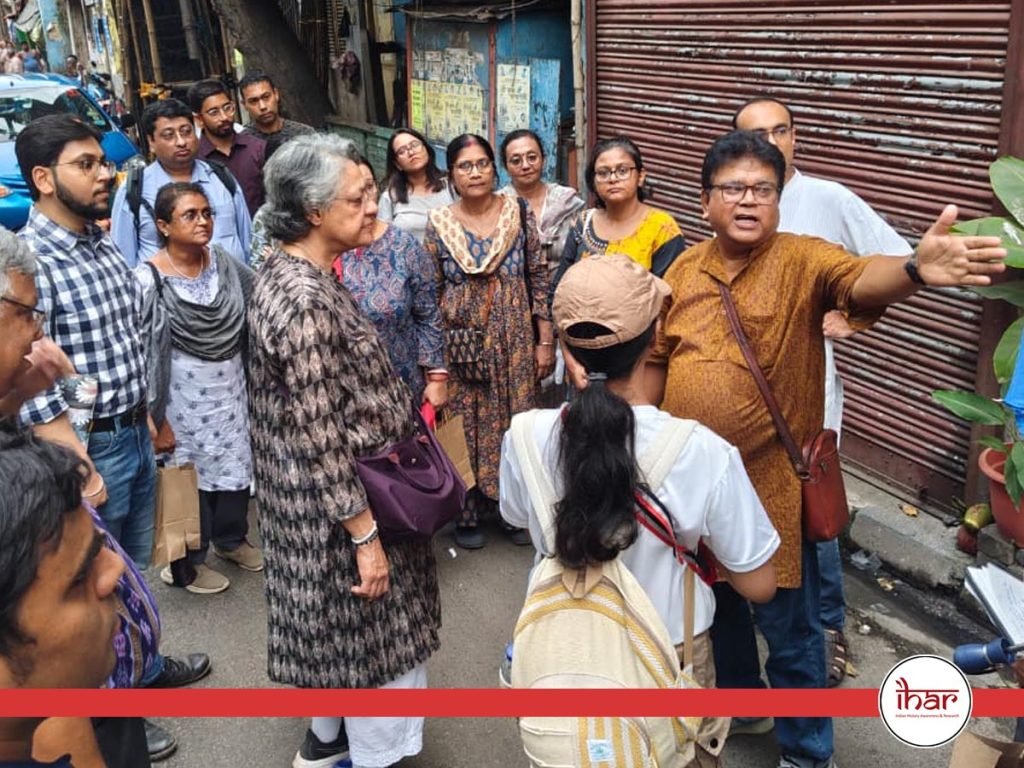
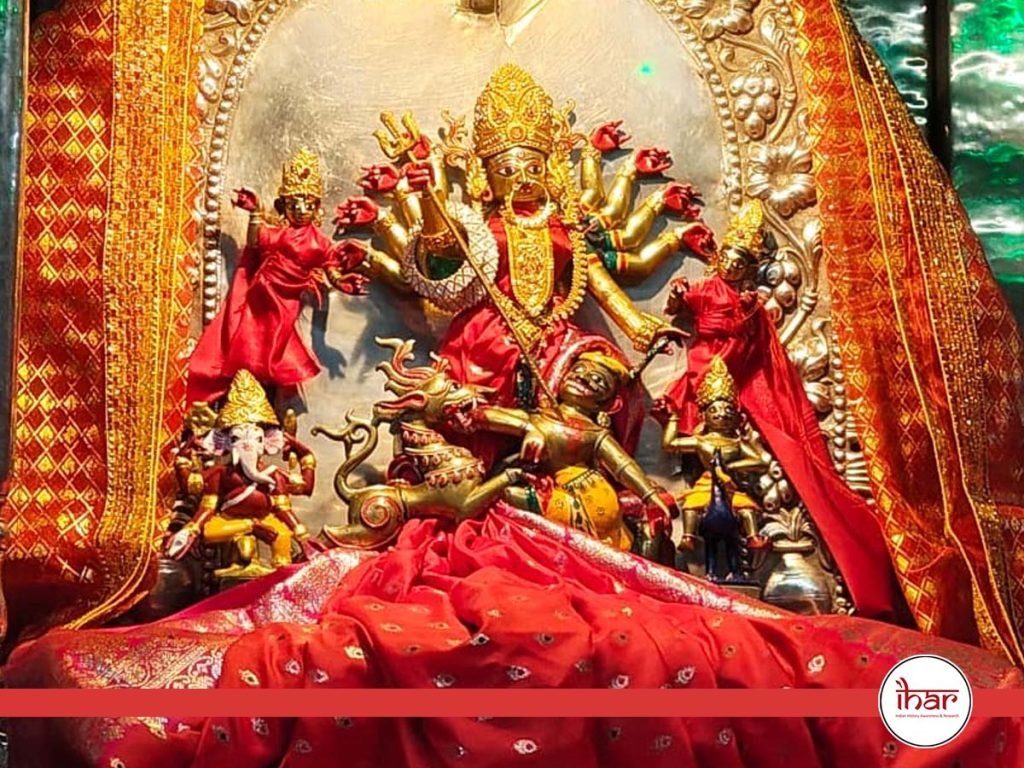
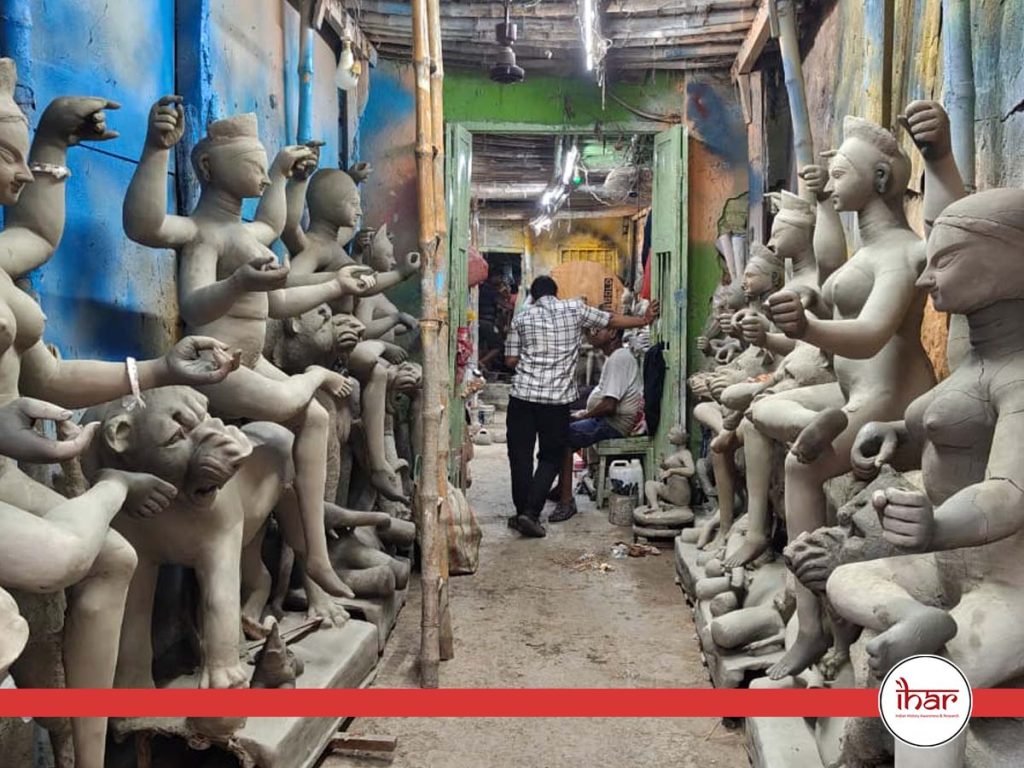
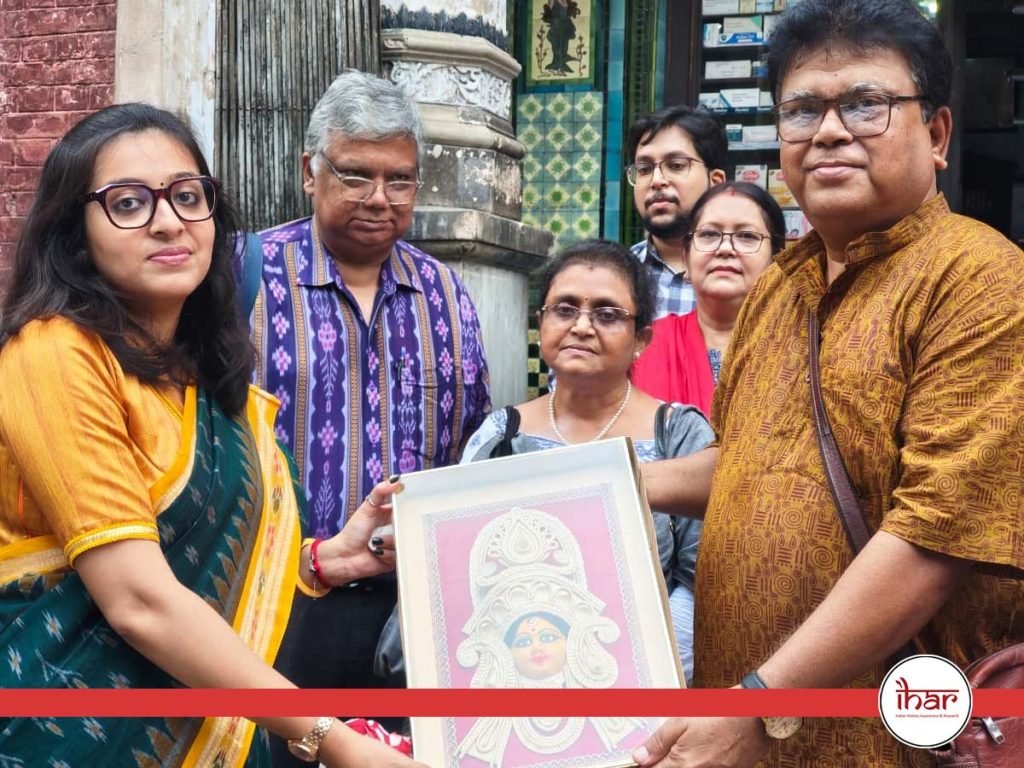
articles
Preserving Bengal’s Intellectual Legacy: IHAR West Bengal Chapter Undertakes Detailed Survey of Uttarpara Joykrishna Mukherjee Public Library
Published
1 month agoon
September 20, 2025By
Suprabho Roy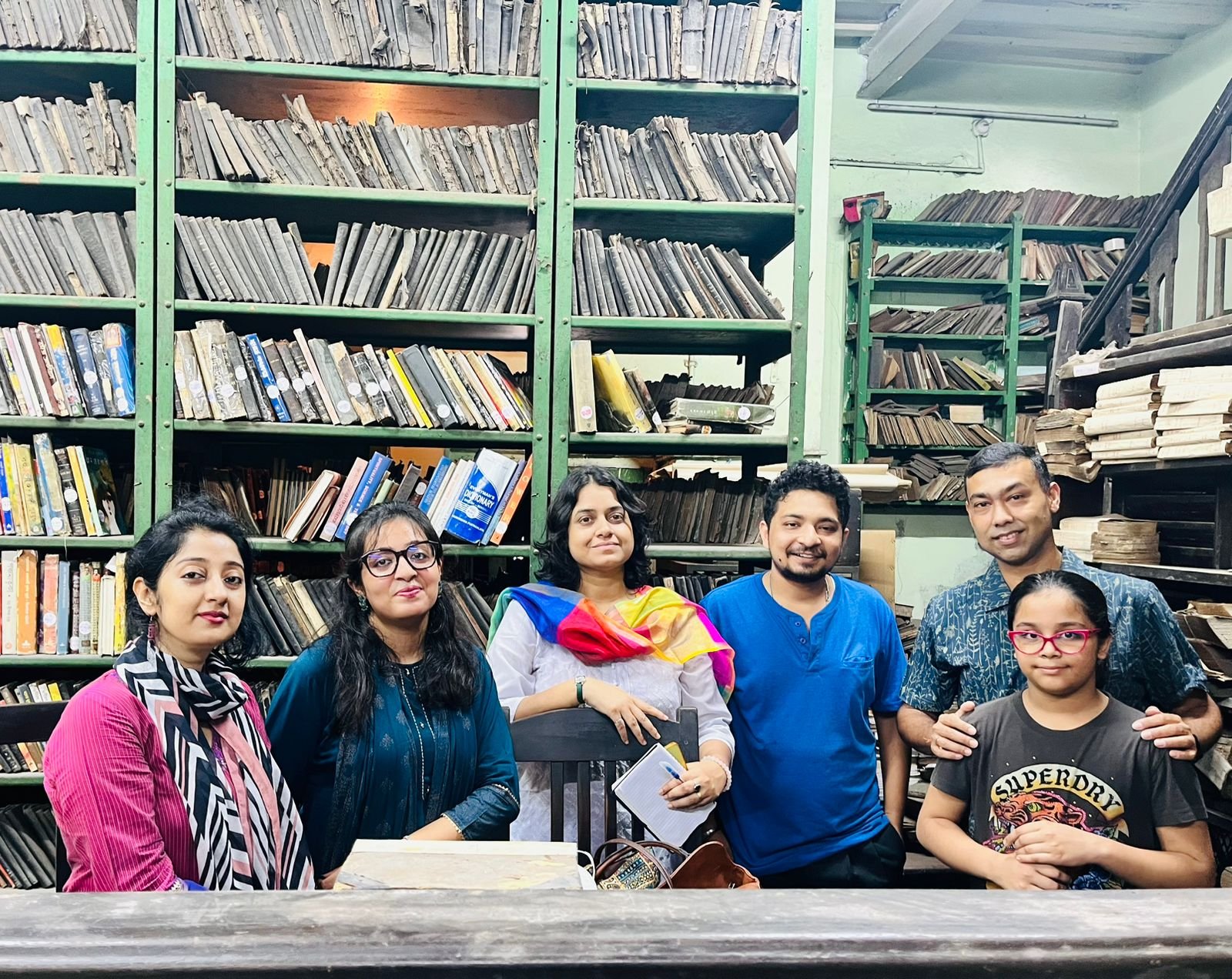
The site visit report on the Uttarpara Joykrishna Mukherjee Public Library is a comprehensive survey conducted by the Indian History Awareness Research (IHAR) team, highlighting the library’s unparalleled status as a treasure trove of rare manuscripts, books, and archival materials crucial for understanding Bengal and India’s cultural and intellectual heritage. This survey was prompted by concerns raised by the descendants of Shri Joykrishna Mukherjee regarding the fragile state of invaluable collections within this historic institution. As an independent organization committed to heritage conservation, IHAR assessed the library to recommend steps for its safekeeping, digitization, and modernization, thereby continuing the library’s legacy as a pillar of learning and knowledge since its inception in 1859.
The project was overseen by Project Director Shri Surya Sarathi Roy, Director of India Operations at IHAR. The IHAR team comprised notable members including Shri Bhujang Bobde (Director, Karnataka Epigraphic Conservationist Archives), Ms. Manideepa Basu (Executive Member, Indian Museum), Ms. Mouli Roy (Executive Member, National Library), and Shri Sumit Ganguly (Co-Convenor Academic, IHAR), among others. Their collective expertise in history, museology, conservation, and law was pivotal in conducting a detailed evaluation of the library’s current condition and proposing actionable measures for its preservation.
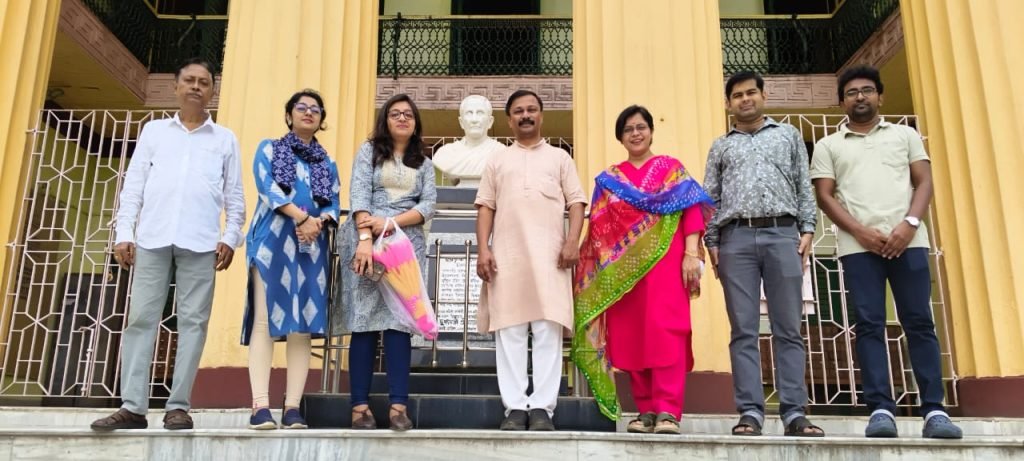
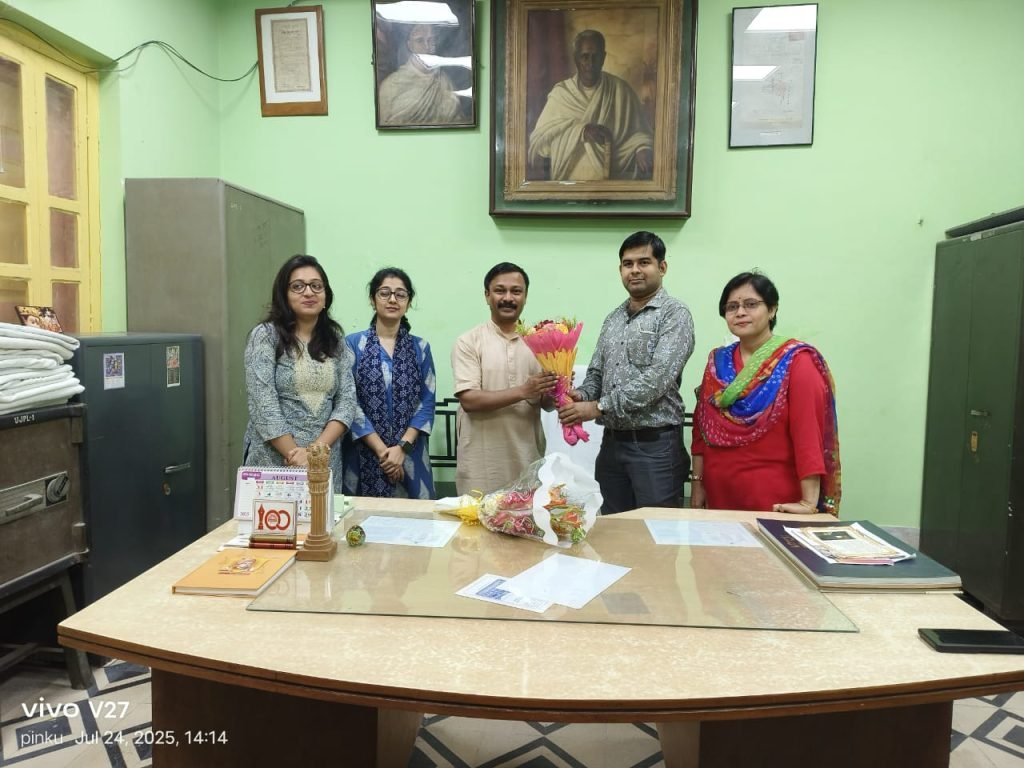
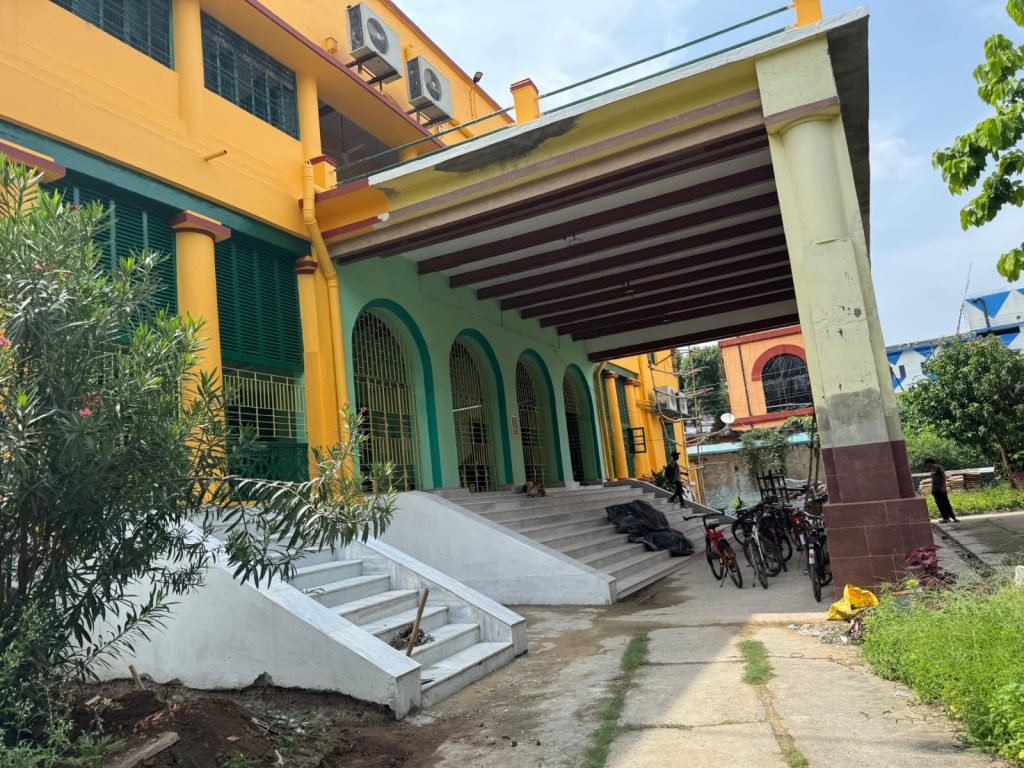
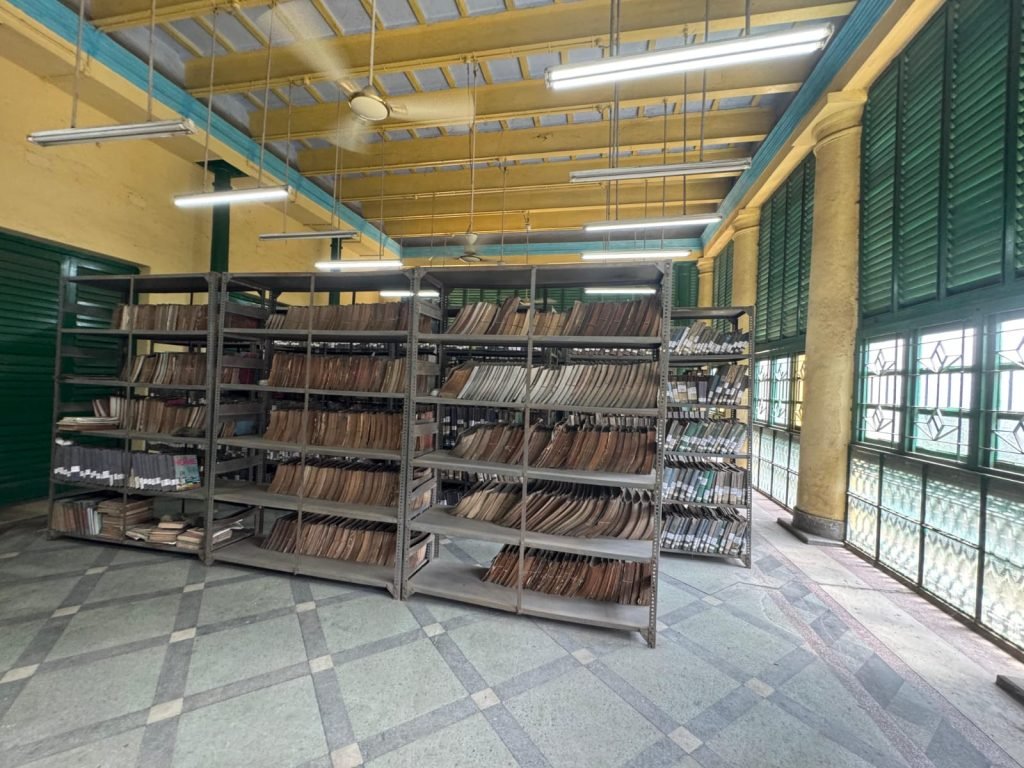
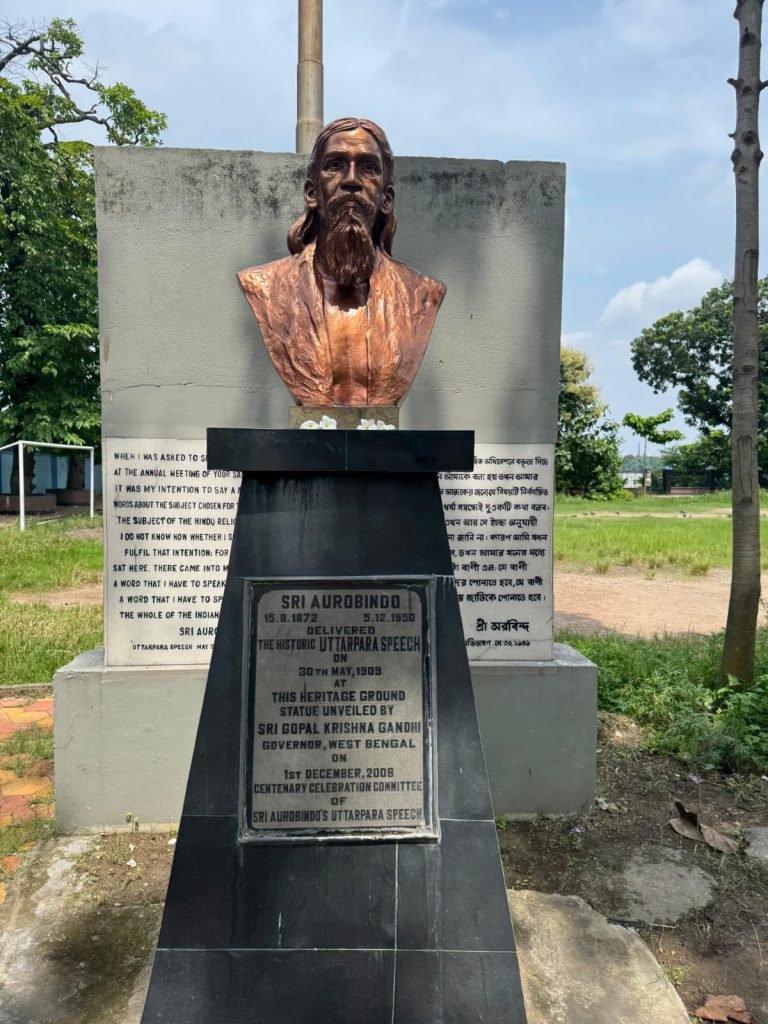
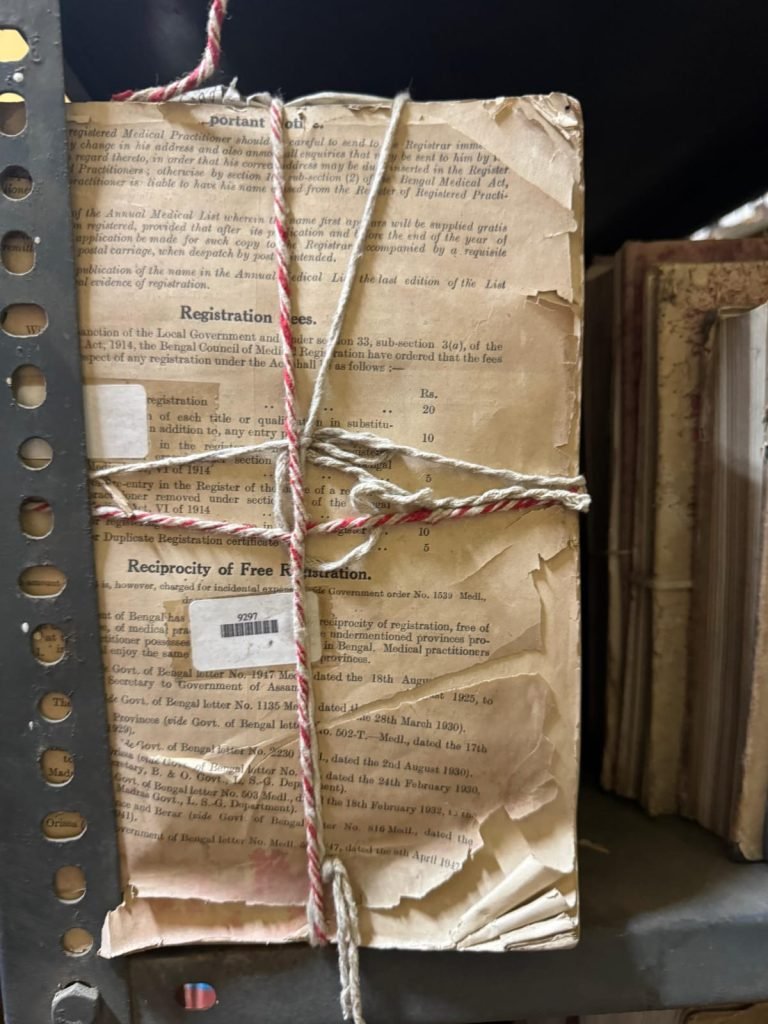

CONSTRUCTING GENDER IDENTITIES IN DEATH : RETHINKING MORTUARY ARCHAEOLOGY THROUGH THE EVIDENCE OF SINAULI

Rediscovering Sutanuti: IHAR WB CHAPTER’S Second Heritage Walk

Preserving Bengal’s Intellectual Legacy: IHAR West Bengal Chapter Undertakes Detailed Survey of Uttarpara Joykrishna Mukherjee Public Library

Reviving Bengal’s Intellectual Heritage: IHAR West Bengal Chapter Undertakes Detailed Survey of Chaitanya Library in Kolkata

NATIONAL ARCHAEOLOGICAL CONFERENCE IGNITES SCHOLARLY DISCOURSE WITH LAUNCH OF IHAR MP-CG CHAPTER

Bharat Varsh – A Cradle of Civilzation – Panel Discussion

Bringing our Gods back home – A Conversation with Shri Vijay Kumar

Panel Discussion on Sati

Bengal’s Glorious and Diverse Heritage- Traditions and Festivals – Panel Discussion

IHAR – World Heritage Day – April 18th 2025 updates

Debugging the wrong historical narratives – Vedveery Arya – Exclusive podcast

The Untold History Of Ancient India – A Scientific Narration

Some new evidence in Veda Shakhas about their Epoch by Shri Mrugendra Vinod ji

West Bengal’s textbooks must reflect true heritage – Sahana Singh at webinar ‘Vision Bengal’

Bringing our Gods back home – A Conversation with Shri Vijay Kumar
Trending
-

 Events2 years ago
Events2 years agoBharat Varsh – A Cradle of Civilzation – Panel Discussion
-

 Videos2 years ago
Videos2 years agoBringing our Gods back home – A Conversation with Shri Vijay Kumar
-

 Videos11 years ago
Videos11 years agoPanel Discussion on Sati
-

 Events7 months ago
Events7 months agoBengal’s Glorious and Diverse Heritage- Traditions and Festivals – Panel Discussion
-
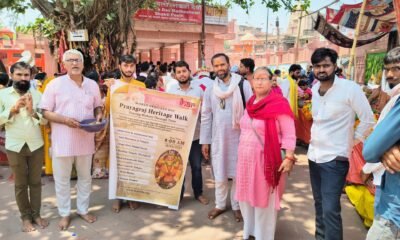
 Events6 months ago
Events6 months agoIHAR – World Heritage Day – April 18th 2025 updates

